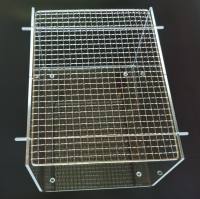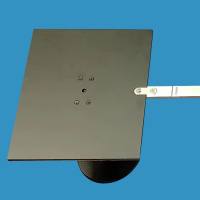Chromosome (DNA) walking
互联网
This technique can be used to isolate overlapping DNA fragments starting with a previously cloned DNA fragment that maps near a gene of interest (dark red). The walk is continued until a clone containing the desired gene is identified.
In this example, the chromosomal DNA fragments are cloned in λ phage. The starting clone (green) is used as a probe to screen a genomic DNA library for overlapping sequences; usually a walk is conducted in both directions, since it generally is not known how far the gene of interest is from the starting clone or whether it is to the left or right.
For simplicity, a one-way walk is illustrated here. The clones isolated in the walk are used as probes in Southern blot analysis of genomic DNA from mutants.
This analysis can detect chromosomal deletions and rearrangements in the mutant DNA , but normally cannot detect point mutations unless they change the restriction-site sequences recognized by the restriction enzymes used in the analysis.
In this way, the DNA clone containing the region corresponding to the gene of interest can be identified. Normally, a walk would involve more than the three steps shown here. In some cases, part of the desired gene may already be cloned, and DNA walking may be necessary to isolate the entire gene.
By initiating walks from several different starting clones in parallel (these walks will eventually link up), the process of isolating overlapping clones for long contiguous stretches of DNA is accelerated. [From J. D. Watson et al., 1992, Recombinant DNA , 2d ed., W. H. Freeman and Company, p. 128.]









